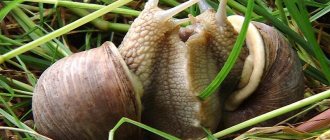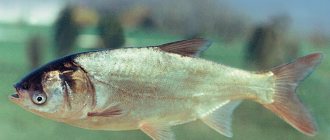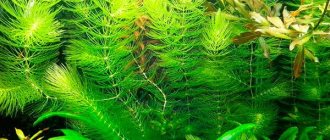A plant very rarely found in home gardens that looks like a fountain suddenly rising on a windowsill, a fireworks display, or a bunch of some bird’s tufts crowning a sheaf of bare stems is cyperus. The owner of the plant will definitely proudly show the flower to the guests and secretly tell her that her pet is a real doctor, helping her get rid of headaches, insomnia, improving her mood and even saving her from myopia and blurred vision. This is true, the plant is wonderful, very decorative and now it can be seen more and more often in the homes of indoor floriculture lovers.
Description
The ancestor of the plant can be considered the ancient papyrus growing along the banks of the Egyptian Nile. Nowadays, cyperus (another name for Cyperus) is less common, it can only be found in the river delta, and species that were previously widespread in other places, for example, Ecuador, have completely disappeared from the face of the Earth. Looking at the graceful umbrella plant, it is difficult to imagine that its predecessor once rustled three-meter thickets and served as food for hippopotamuses.
Of course, the role of plants of this genus (and the genus belongs to the Sedge family) was not limited to this. Shoes and clothing (fabrics) were made from papyrus; even ships were built from thick trunks of paper ships.
They used it for food; types of edible food (ground almonds) were grown for their sweet tubers. The doctors used this wonderful plant and made infusions to treat colds and stomach pain.
Classification - sedge (Cyperus, hence the name - cyperus) belongs to the genus of perennial herbaceous plants (sedge also belongs to this family). It is interesting that in our country you can meet representatives of the Osokovs, for example, in the Far East. This is not surprising, because there are already more than seven hundred representatives of Cyperus: along the floodplains of reservoirs, along swampy shores, wherever there is a lot of moisture and relatively warm.
Externally, all representatives are similar. These are rhizomatous plants that form several stems that originate close to the ground (from the root). Each stem ends in a rosette of narrow leaves of a very beautiful green hue. It blooms simply - small flowers of dim color form modest umbrellas.
Beneficial features
Since papyrus loves a large amount of moisture, it is often used to decorate rooms or open ground where water is located. For example, artificial waterfalls, aquariums, water gardens. Thanks to cyperus, the following beneficial properties appear:
- evaporation of copious amounts of moisture saturating the air;
- creation of a high-quality microclimate;
- in ancient centuries, papyrus was used to make boats, ropes, baskets and other items;
- production of paper, which was previously used to create books;
- used in food in African countries, where papyrus is added to salads and drinks;
- making decoctions from leaves that have a beneficial effect on the nervous system, therefore eliminating insomnia, headaches, dizziness;
- making decoctions that normalize metabolism, blood pressure, the condition of the visual organs, and the digestive tract;
- the possibility of consumption by animals that like to eat papyrus leaves (it is not dangerous, there are no toxic substances inside), due to which the flower is often called the cat palm.
Papyrus under natural growing conditions is considered a weed. If it grows near houses or garden beds, it is weeded. Gradually, the number of cyperus plants decreases, so it was listed in the Red Book.
Signs and superstitions
There are a lot of signs associated with Cyperus.
Esotericists believe that Cyperus has a very powerful energy field. Despite the fact that he is considered an energy vampire, the flower’s vampirism is special - it feeds on negative vibes, clearing the surrounding space of negativity. The leaves, acting as a trap for “bad” signals, stand guard over the house. Maybe that’s why people who know this feature call Cyperus a “home guard.” In addition, the plant improves the emotional background, reduces stress, has a beneficial effect on character, curing depression.
However, esotericists warn that you can only leave it in the bedroom for a very short time, and only if there is a goal to cure insomnia. It is absolutely not advisable to constantly keep it next to your sleeping place; after all, this plant is a vampire.
Followers of Chinese teachings believe that cyperus protects against lies, hypocrisy, betrayal and betrayal.
Ancient papyri were made from this herb.
The houseplant Cyperus (from the Latin Cyperus) is a genus of wild herbs; in nature it has the names sytnyag, sytnyag or sytovnik. There are more than five hundred species of sati, and most of them are found in subtropical areas, where they grow along water bodies. But even in our swampy areas, a direct relative of Cyperus lives - this is sedge, or reed.
Sitnyag is a direct relative of Cyperus, growing in our latitudes
Cyperus looks like dill, as it has similar umbrellas on tall stems, but people are more accustomed to calling it a miniature palm tree.
Cyperus is found mainly in Africa, where it grows up to three meters in height, representing a spreading bush of erect triangular stems with umbrella whorls at the end, consisting of leaves of different lengths and colors. It does not bloom very attractively, scattering brown inflorescences throughout the rosette.
Cyperus blooms with brown flowers
This plant grows along the banks of reservoirs, and often right in them. Cyperus roots are not subject to rotting and thrive in water . Therefore, the plant is considered a marsh plant.
Few people know that, in addition to aesthetic pleasure, cyperus can provide healing benefits. The plant is credited with such qualities as normalizing blood pressure and sleep; in addition, it is said to have a positive effect on vision and generally create a favorable and harmonious atmosphere in everyday life and family.
Cyperus is unpretentious. He does not need a south window sill, he does not require direct lighting and is content with weak diffused rays. Thanks to this feature, Cyperus looks great in the back of the apartment, in a floor pot.
Cyperus looks great in the back of the room
Cyperus species
Papyrus (Cyperus papirus)
Papyrus (Cyperus papirus)
A powerful, beautiful plant consisting of huge (up to 2 m in length) stems, which are crowned with decoratively hanging large leaves in whorls. It is almost never used in indoor floriculture, but in gardens and around ponds it looks very beautiful. Blooms with rare single flowers.
Cyperus alfernifolius
Cyperus alfernifolius
An elegant plant up to 1.5 meters high. Often grown in apartments and indoors. Narrow leaves with sharp ends form flat whorls, inside of which there are inflorescences. The most famous variety is Pharaoh. This is a demanding species to grow; it must be planted in a very large pot without holes in the bottom and watered frequently.
Cyperus helferi
Cyperus helferi
A very interesting variety that was discovered by Johann Heifer while traveling in Thailand. In nature, it grows only in swamps, spreading its rhizome up to 5 meters in length. The bush is not very tall - up to 50 cm, the green ribbon-shaped leaves have a deep notch in the middle. In home floriculture it is used as an aquarium plant.
Cyperus Zumula
Cyperus Zumula
This Venus herb (another name for cyperus) is also called “Cyperus for cats.”
The leaves of this species are long (longer than the stems), drooping. The flower resembles a fountain of flowing water. It grows well in winter gardens, decorating them, especially if you place the pot next to water.
Variegated Cyperus species
Variegate Cyperus
There are decorative variants of variegated cyperus, all of them are collectively called “Variegatus”. They are quite rare and expensive, so if the owner sees that along with leaves of variegated colors, pure green ones have begun to appear, then he must urgently remove them. Otherwise, they will displace variegated ones, which will reduce the decorative value of the variety.
Is the plant dangerous for cats?
Cyperus is called the cat palm. It does not pose a threat to the health of the animal; moreover, cats, as a rule, themselves show interest in the flower. Eating leaves is objectively beneficial for them.
Reference! The plant cleanses the stomach of hairballs and other indigestible things that gradually accumulate in it.
Some people specially plant orchard so that the cat will eat it. This has almost no effect on the appearance of the plant: its leaves very quickly restore their shape.
Features of home care
Cyperus in the world of flower growers is considered very unpretentious, practically a plant for beginners. However, it is necessary to adhere to the basic rules of care at home, choose the right place and soil, place the plants in sufficient light and temperature, fertilize and feed the flower in accordance with its requirements.
Choice of location and lighting
The best place for a newcomer from humid, warm coastal places is the western and eastern sides of the apartment, as he needs sufficient, but diffused lighting. If too bright light penetrates the windows (especially in summer), then the plant will have to be shaded, at least during the midday hours.
If there is a lack of light, the plant will not die, but will cease to please the owner with its powerful growth and rich shade of leaves, so it is better to add artificial light (cyperus will respond well to this in winter).
Selection of soil and container
The plant does not have any special requirements for soil, however, it will show itself in all its glory only in a large container filled with light soil. To make soil for a flower with your own hands, you need to add peat to a mixture of garden soil and sand. After mixing, enrich the soil with moisture-absorbing additives, for example, brick chips.
If you use hydrogel, then the plant will be comfortable and it will be easier for the owner to organize care at home.
Fertilizers and fertilizers
As with the soil, cyperus is not capricious when it comes to fertilizing. It is enough to apply ordinary mineral fertilizers for flowers in the summer, and you do not need to do this too often. Once every two weeks is enough.
Temperature
Best temperature for satiation:
- moderate (from +15-16оС to +22-24оС) – in summer;
- cooler (will tolerate temperatures from +14 to +20°C) - in winter.
Humidity and watering
A resident of swampy and coastal zones, Cyperus is very moisture-loving. In summer, when flower growth is especially active, the rhizome should be constantly moist. It also reacts well to spraying. In winter, the drinking regime should be reduced and the moisture in the tray should be monitored to avoid rotting of the roots.
Transfer
To replant a tree (and it is replanted quite often due to its rapid growth) it is necessary:
- prepare a container larger in size than the previous one. As a rule, expanded clay is not placed on the bottom; some gardeners do not even make a hole in the bottom;
- fill the pot one third with loose neutral soil;
- pull out the plant, especially without clearing it of old soil, shake off excess soil;
- transfer to a new container;
- sprinkle with fresh soil, press down a little;
- water.
Transfer
Young growth needs annual replanting, adult plants - every 3 years, as needed. The plant can be planted at any time of the year; there are no special requirements in this case.
A drainage layer is poured onto the bottom of the box. The culture should occupy a quarter of the total volume of the container. Due to the shallow root system, shallow but wide boxes are chosen.
Important! Soil for replanting Cyperus is bought at a flower shop - this is a special mixture for home palm trees, or a soil mixture with a neutral reaction is prepared.
Reproduction methods
Cyperus can be propagated in different ways - by seeds, cuttings, rosettes and dividing the bush.
Seeds
Not the easiest, and most importantly not a very rewarding and effective method of reproduction, since often with this method the species properties are not preserved. However, it is still used to obtain a large number of young bushes and update the collection. To do this, the seeds are scattered over the surface of the soil (of normal composition) poured into a low and wide container. Press it to the soil and cover it with film or glass.
As soon as signs of germination appear, they organize a low greenhouse (for example, from low glass jars). They dive when the seedlings reach a height of about 3-4 cm, immediately into small pots. At a height of about 10 cm, they are transplanted into larger pots, but the size of the container must be increased gradually.
Cuttings
A good, easy way that almost always leads to a positive result.
Necessary:
- find a rosette (whorl or top) where dormant buds are visible;
- cut it off with a small piece of shoot (no more than 7 cm);
- prepare a flat container with standard soil for cyperus;
- place the cut rosette with the shoot up, press the center of the rosette to the ground;
- sprinkle the planting site;
- wait until the young plant takes root and transplant it into a permanent container.
Rosettes
The method of reproduction by rosettes is very natural for the satiate, since this is how it most often reproduces in its natural habitat. It is necessary to lower the socket into a bowl filled with clean water and pin it by the edge (for example, with a not very tightly squeezed clothespin). There is no need to separate the shoot from the mother plant. Roots will appear from the bud quite quickly, then the rosette can be separated and transferred to the ground.
Dividing the bush
Probably the easiest way of all. To propagate Cyperus using this method, it is necessary to first determine the number of parts into which the mother plant will be divided. Next, prepare the required number of smaller pots and fill them with fresh soil. Then, using a sharp knife, divide the rhizome into the required number of parts, so that each young bush consists of 3-4 shoots, carefully place each one in its own container, “stomping it down” and watering it abundantly.
Rare aquatic plant for Russia suitable for human consumption
The answer is chilim, or water chestnut (Tgara natans). It is an aquatic plant with large greenish leaves, very similar to currant leaves. Long thin stems stretch from the leaves to the very bottom. If you lift them, then under the leaves on the stem you can see small blackish boxes with five spines. Chilim is similar in size and taste to chestnuts. The local population sometimes collects it in bags in the fall.
In some countries, water chestnut (Tgara bicornis) is widely cultivated. Chilim can be eaten raw, boiled in salted water, baked in ashes like potatoes, or made into soup. Bread is baked from nuts ground into flour. Boiled fruits of this plant are sold everywhere in China.
Possible problems
Why does Cyperus turn yellow?
Very often this problem is associated with a lack of mineral nutrition. This happens when the plant suffers from a cramped pot or salty or acidic soil. It is necessary to transplant the cyperus into a free container, renewing the soil, and then feed it with mineral fertilizers.
Why do the tips of Cyperus leaves dry out?
Also a common problem. The fact is that satiety is very moisture-loving. Any disruptions in the drinking regime lead to drying out of the tissues and general oppression of the plant. It is necessary to stabilize watering by spraying the flower, and also to increase the air humidity in the apartment.
If the owner organizes a summer vacation for the pet somewhere in a summer garden near a pond, the tsiperus will be especially grateful.
Diseases and pests
Cyperus is a very healthy plant; it is practically not affected by pathogenic bacteria or fungi.
The main pests are scale insects, spider mites, whiteflies and mealybugs. They “attack” food, mainly in a dry, unfavorable environment, so the best measure of prevention and treatment is sufficient hydration. If trouble occurs, special medications will be needed - Actellik, Aktara or Arrivo. They must be used strictly following the attached instructions.
Bloom
Cyperus is a flowering plant. Peduncles are triangular in shape. They are erect, but flexible, so they do not break under the pressure of the wind. Small, inconspicuous flowers of Cyperus are arranged singly or in a rosette. They are pale green, light brown or milky in color. Most often, flowering is observed in the summer, in June or July, but some varieties bloom throughout the summer until mid-autumn. After flowering, small fruits appear - nuts or spikelets of a brownish color. Pollination occurs due to wind - fine pollen is quickly carried by the wind to nearby plants.
Cyperus in the aquarium
Cyperus Helfera makes a great addition to underwater aquarium gardens. The long ribbon-shaped leaves are located partially under water, but some part of the leaf blade rises to the surface and spreads along the water surface, which looks very beautiful. It is especially pleasant to watch when the leaves sway slightly along the artificially created flow.
Of course, for Cyperus to grow luxuriantly in water, favorable conditions are necessary. This includes temperature (not lower than +22°C) and acidity closer to neutral. Also, satiety responds well to carbon dioxide fertilizing.
A guest from distant warm countries - Tsiperus - is good for everyone. And unpretentiousness, and excellent health, and the decorativeness of lush, openwork bushes, and grateful responsiveness to care. This makes it stand out among many indoor plants and makes it a favorite among both beginners and experienced gardeners. And soon, a wonderful plant - cyperus will become not a guest, but the owner of home flower beds.
Growing palm trees from seeds: step-by-step instructions
Typically, cyperus is either purchased as an adult or grown independently from seeds. In order for the seeds to germinate, you need to choose the right soil.
Useful! Usually they take slightly acidic soil, leaf humus, peat or swamp silt, as well as 1/2 cup of sand.
You need to put drainage down; any pebbles can act as it.
The seeds should not be deepened too much, otherwise they simply will not germinate. Every day, the pot with future cyperuses should be watered with warm water, but the soil should not be allowed to become very waterlogged.
If the temperature around +18 degrees Celsius is maintained, the seeds will sprout quickly. Already strengthened sprouts need to be separated from each other; failure can result in problems with the root system.
✿










